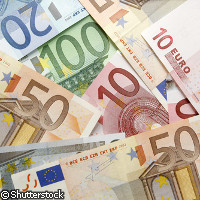EU R&D spending unchanged in 2007
In 2007 the EU spent EUR 229 billion on research and development (R&D), equivalent to 1.85% of Gross Domestic Product (GDP), according to newly-released figures from Eurostat. The EU has set itself the goal of spending 3% of GDP on R&D by 2010; however, spending has remained stable at around 1.85% of GDP over the past few years. For comparison, the US spent 2.67% of GDP on R&D in 2007, and in 2006 (the latest year for which data are available), Japan spent 3.40%. In 2007, just 2 countries spent over 3% of GDP on R&D: Sweden and Finland spent 3.60% and 3.47%, respectively, although even these nations spent less than they had in 2005. A further 4 countries (Denmark, Germany, France and Austria) spent over 2% of GDP on R&D in 2007. The countries that have increased their R&D spending the most since 2001 are Austria (which increased its spending from 2.07% in 2001 to 2.56% in 2007), Estonia (0.71% to 1.14%) and Portugal (0.80% to 1.18%). However, 10 EU Member States still spend less than 1% of GDP on research; Bulgaria, Cyprus and Slovakia all spent less than 0.5%. On the employment front, some 2.3 million people (full-time equivalent) were involved in R&D work in the EU in 2007. In addition to researchers, this figure includes research managers, administrators and clerical staff. These R&D personnel made up 1.6% of the EU's workforce. As with R&D spending, there are immense differences between the Member States. In Finland, R&D personnel account for 3.2% of total employment. R&D personnel make up over 2% of employment in Denmark, Luxembourg, Austria and Sweden. In contrast, they account for less than 1% of employment in Bulgaria, Cyprus, Poland, Portugal and Romania. In the statistics, researchers are seen as a subgroup of the larger R&D personnel category. Researchers are defined as 'professionals engaged in the conception or creation of new knowledge, products, processes, methods and systems, and in the management of the projects concerned'. This professional group accounted for 0.9% of total employment in the EU in 2007. Businesses have an important role to play in supporting R&D. The Eurostat figures reveal that between 2004 and 2006, 39% of companies with more than 10 employees were involved in some kind of innovation activity. Germany turned out to have the highest proportion of innovative companies (63%), followed by Belgium (52%), Austria and Finland (both 51%) and Luxembourg (49%). The EU set itself the goal of spending 3% of GDP on R&D by 2010 in Barcelona, Spain back in 2002. The goal was set in the framework of the Lisbon Strategy, which aims to turn Europe into a strong, knowledge-based economy.



